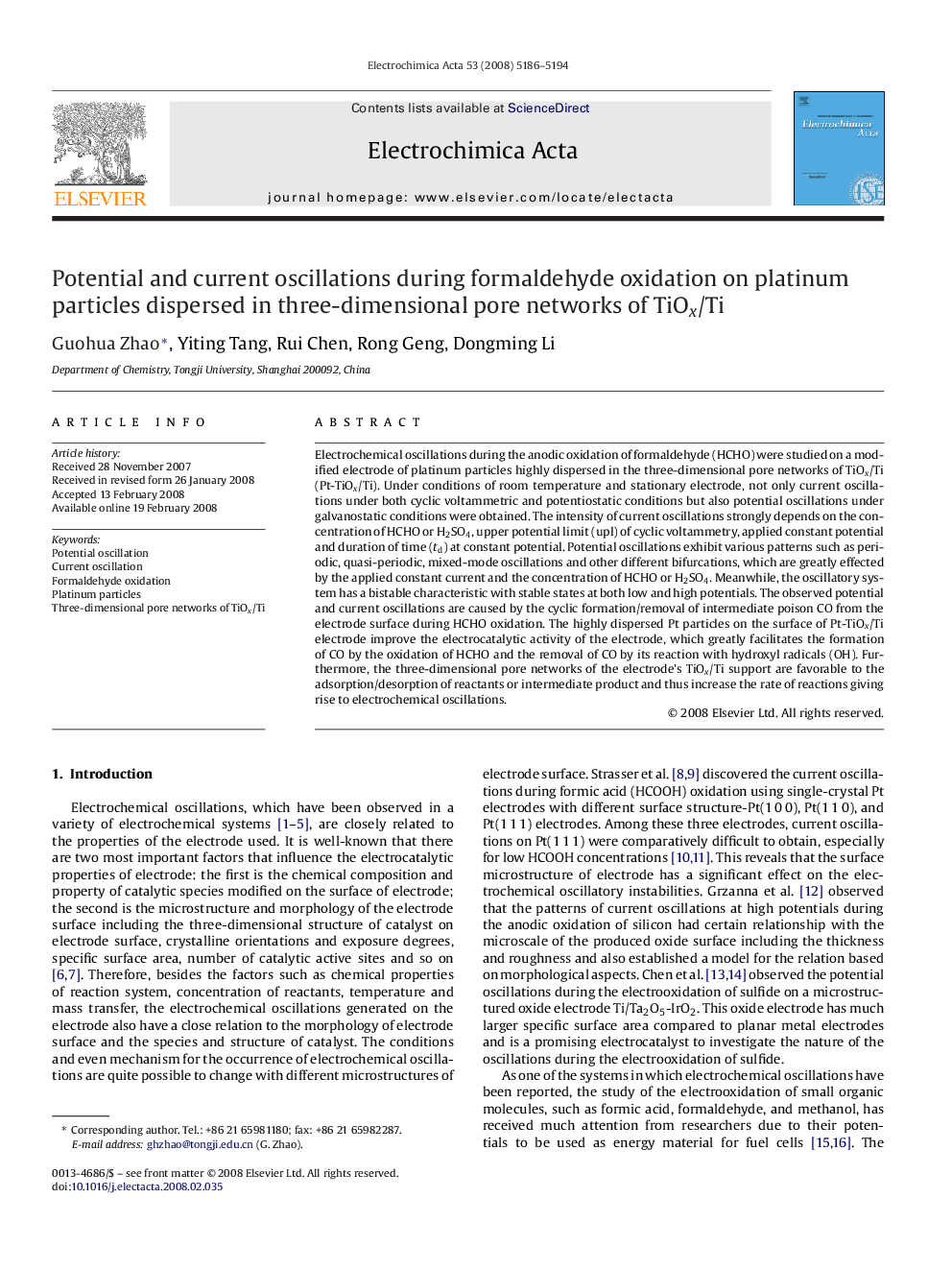| کد مقاله | کد نشریه | سال انتشار | مقاله انگلیسی | نسخه تمام متن |
|---|---|---|---|---|
| 192274 | 459738 | 2008 | 9 صفحه PDF | دانلود رایگان |

Electrochemical oscillations during the anodic oxidation of formaldehyde (HCHO) were studied on a modified electrode of platinum particles highly dispersed in the three-dimensional pore networks of TiOx/Ti (Pt-TiOx/Ti). Under conditions of room temperature and stationary electrode, not only current oscillations under both cyclic voltammetric and potentiostatic conditions but also potential oscillations under galvanostatic conditions were obtained. The intensity of current oscillations strongly depends on the concentration of HCHO or H2SO4, upper potential limit (upl) of cyclic voltammetry, applied constant potential and duration of time (td) at constant potential. Potential oscillations exhibit various patterns such as periodic, quasi-periodic, mixed-mode oscillations and other different bifurcations, which are greatly effected by the applied constant current and the concentration of HCHO or H2SO4. Meanwhile, the oscillatory system has a bistable characteristic with stable states at both low and high potentials. The observed potential and current oscillations are caused by the cyclic formation/removal of intermediate poison CO from the electrode surface during HCHO oxidation. The highly dispersed Pt particles on the surface of Pt-TiOx/Ti electrode improve the electrocatalytic activity of the electrode, which greatly facilitates the formation of CO by the oxidation of HCHO and the removal of CO by its reaction with hydroxyl radicals (OH). Furthermore, the three-dimensional pore networks of the electrode's TiOx/Ti support are favorable to the adsorption/desorption of reactants or intermediate product and thus increase the rate of reactions giving rise to electrochemical oscillations.
Journal: Electrochimica Acta - Volume 53, Issue 16, 30 June 2008, Pages 5186–5194